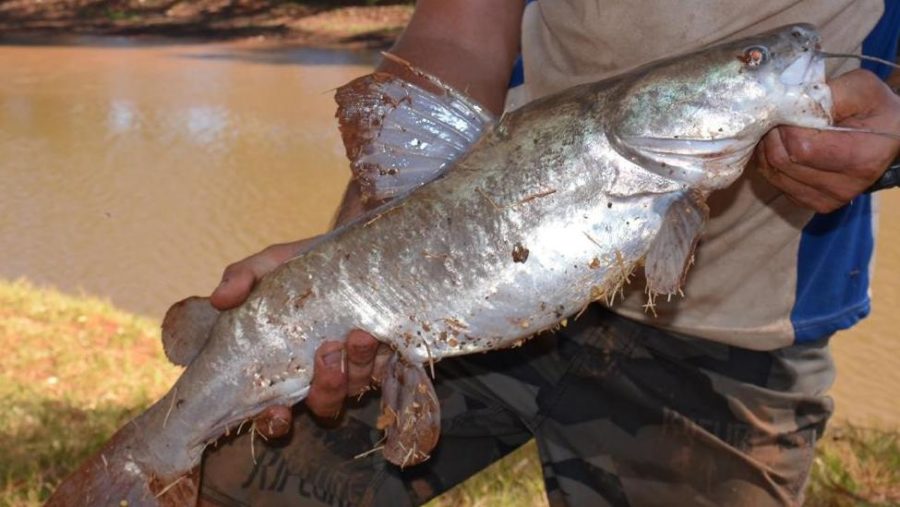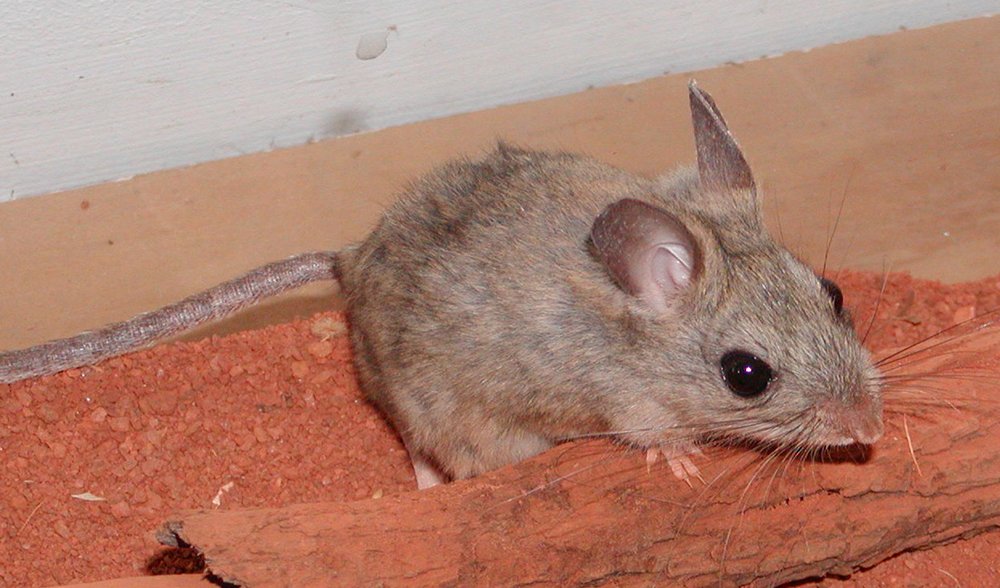Scientists have found catfish eating mice

A POPULATION OF catfish in Western Australia’s Pilbara region have been found to eat mice – but researchers aren’t sure how.
The discovery came as a surprise, when a team of researchers from Murdoch University were analysing the stomach contents of the fish, looking for an introduced parasite.
Analysis of 18 lesser salmon catfish in the Ashburton River revealed something strange – a high proportion of digested mammals, specifically, the native spinifex hopping mouse.
“It was pretty surprising – about half had at least one in their stomach, and two of them had three,” said Associate Professor David Morgan. “Overall, 95 per cent of the total stomach contents constituted spinifex hopping mice.”

Spinifex hopping mice (Notomys alexis). (Image: Perth Zoo)
David explained that the Ashburton River catfish were significantly larger than those of the same species throughout other areas in its northern Australian distribution – reaching 75cm as opposed to 50cm – and their bloated appearance gave them away.
“It was quite obvious – some of the catfish had really distended stomachs and we were wondering what was in there,” David says.
Omnivorous in nature, the lesser salmon catfish’s diet is known to consist of crustaceans, fruit, insects and plants – but somehow they have been able to access the terrestrial mammals.
The mice – which are found throughout central and western Australian arid zones – are known to experience dramatic population booms after winter rains and build nests on river banks, which may predispose them to opportunistic predation.
“We thought perhaps we’d had localised rain and some of the mice’s extensive burrows may have collapsed, sending them into the river,” David said.
But there is also a possibility that the nocturnal fish are actively hunting the mice – which are also nocturnal – along the riverbanks.
The opportunistic species joins the ranks of bull sharks, Murray cods and other catfish species that have been found with traces of terrestrial mammals in their stomachs. However, David points out these reports tend to be few and far between.
“Although bits of mammals have been found in other species – it’s usually a one-off,” he said. “It’s unusual to see such a high proportion of fish predating on a mammal – to have so many fish in one population is quite unique.”
While it was an unexpected find during the project – led by Dr Erin Kelly, from Murdoch’s Centre for Fish and Fisheries Research – David said the population’s unique feeding habits is an avenue they would like to investigate further.
READ MORE:
- Parasite has caused Darwin’s finches to sing a different tune
- Death-row dingoes plan blocked
- Native fish have outsmarted cane toads

